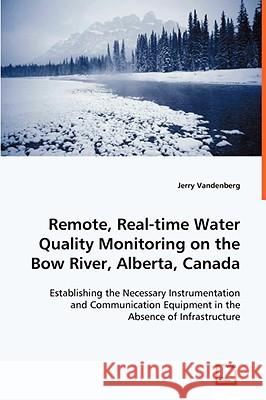Remote, Real-time Water Quality Monitoring on the Bow River, Alberta, Canada » książka
Remote, Real-time Water Quality Monitoring on the Bow River, Alberta, Canada
ISBN-13: 9783639026962 / Angielski / Miękka / 2008 / 80 str.
The Bow River flows from the Rocky Mountains to the confluence with the Oldman River to form the South Saskatchewan River in southern Alberta. The major point source inputs to the Bow River are Calgary's wastewater treatment plants; the major non-point source inputs are storm sewers. A real-time monitoring station was developed on the Bow River downstream of Calgary to evaluate the potential for continuous monitoring with event-initiated sampling for laboratory analyses. The station was effective for discerning short-term trends, estimating mass loads, assessing environmental impacts, and optimizing laboratory resources. Event sampling indicated that BOD, TSS, nitrate, and chloride concentrations rose significantly after storms. Concentrations were combined with discharge to estimate total daily loads during runoff events. Chloride was used as a conservative tracer to map a wastewater effluent plume and compare relative attenuation of nutrients."
The Bow River flows from the Rocky Mountains to the confluence with the Oldman River to form the South Saskatchewan River in southern Alberta. The major point source inputs to the Bow River are Calgarys wastewater treatment plants; the major non-point source inputs are storm sewers. A real-time monitoring station was developed on the Bow River downstream of Calgary to evaluate the potential for continuous monitoring with event-initiated sampling for laboratory analyses. The station was effective for discerning short-term trends, estimating mass loads, assessing environmental impacts, and optimizing laboratory resources. Event sampling indicated that BOD, TSS, nitrate, and chloride concentrations rose significantly after storms. Concentrations were combined with discharge to estimate total daily loads during runoff events. Chloride was used as a conservative tracer to map a wastewater effluent plume and compare relative attenuation of nutrients.











